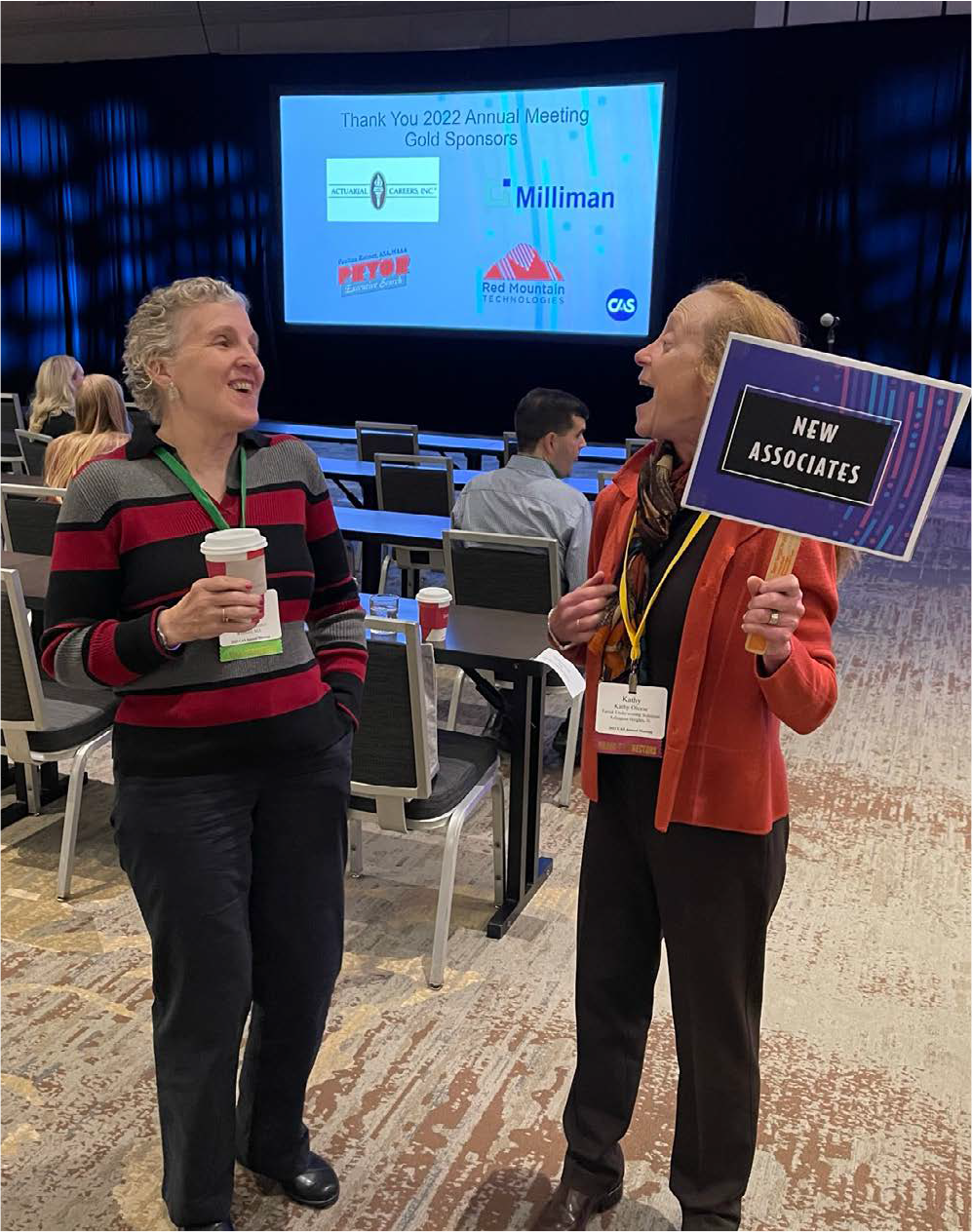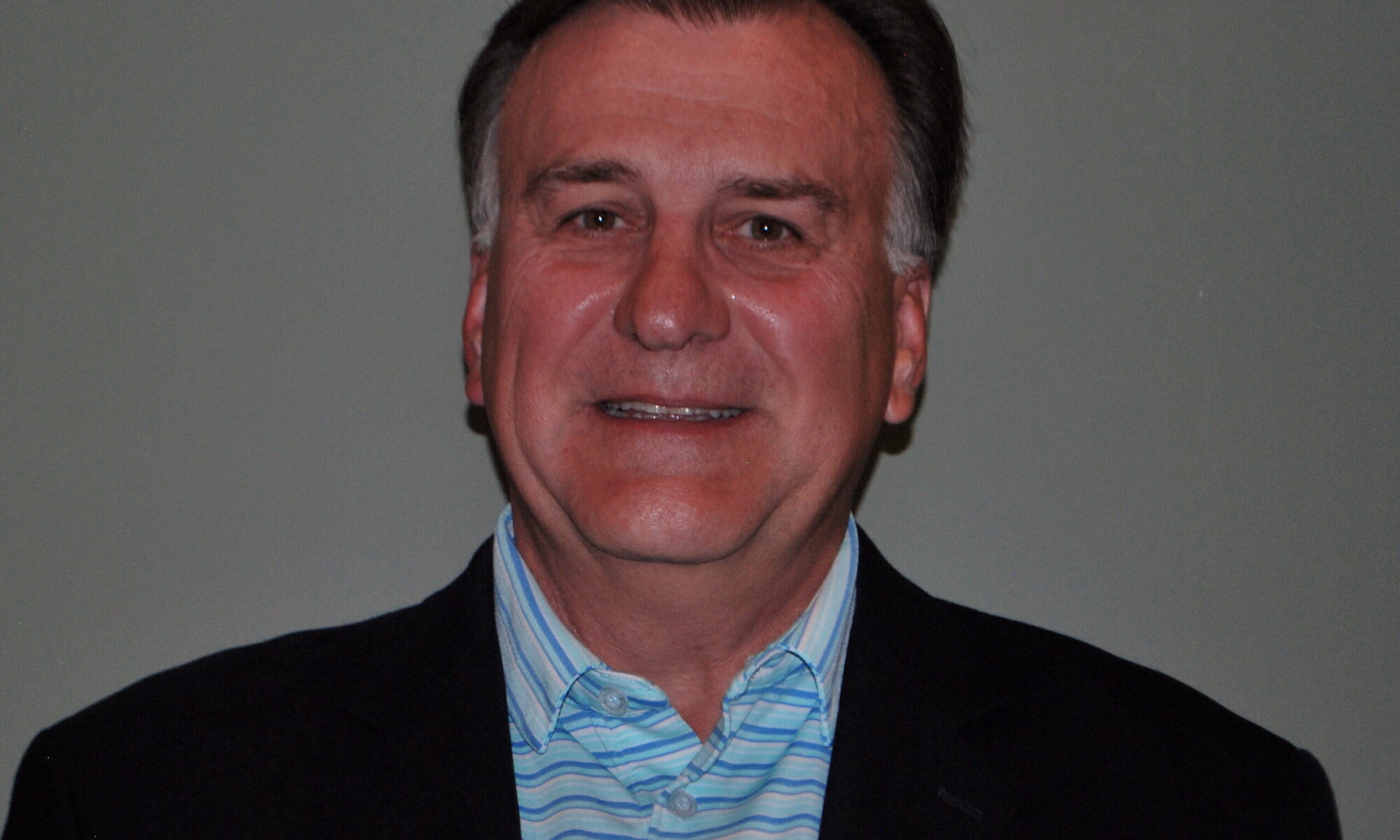
If you ask Mary Hosford to describe her role at the CAS as the VP-Administration, she will tell you that her position is a “coat of many colors.”
First and foremost, the Board tasked Hosford with overseeing the development of key performance indicators, or KPIs, to measure the organization’s progress in achieving the goals of the CAS Strategic Plan on a quarterly basis.
“She took the early draft KPIs to a whole other level,” said Mike Boa, CAS chief communications officer. “Mary’s project management and volunteer engagement skills enabled a steady evolution of building these important metrics into a valuable reporting tool, and the board was ultimately pleased with the final work product. While the KPIs are a team effort, Mary’s leadership was central to the success of the project.”
Alongside CAS staff, Hosford co-leads a wide variety of areas, including the CAS Finance and Investment Councils, the CE Compliance Working Group, several functions within the CAS Publications Department and elections. She is also responsible for the maintenance of the CAS Constitution and Bylaws.
The Finance Council handles all CAS financial matters, such as developing the budget and income statements and insurance coverage. The council is just getting started on the budget for the 2024 fiscal year, which will run from 4Q23 through 3Q24. The VP-Administration also sits on the CAS Audit Committee, which coordinates the annual audited financial statements prepared by our outside accounting firm. The CAS budget is currently around $16M.
Similarly, the Investment Council handles the CAS investments, making sure that there is enough cash to cover expenses while maximizing returns, within the CAS investment policy, on longer-term investments. The funds for investments were around $23 million at year end 2022.
The CE Compliance Working Group conducts the annual audits of member compliance with continuing education requirements. They randomly select 1% of CAS members (as well as a few others, such as new Board members) and check that the continuing education activities that these members documented are in accordance with CAS requirements. The staff liaisons are Kellee Jenkins and Wendy Ponce.
Hosford helps with the CAS Publications Department as a part of the group that reviews opinions, among other duties. “We call her when a decision needs to be made, like revising editorial policies or finding a Variance co-editor in chief replacement,” said Elizabeth Smith, director of publications. “She is very active on the review of AR opinion pieces, many times editing the pieces for better flow and clarity, which is above and beyond.”
She took the early draft KPIs to a whole other level. Mary’s project management and volunteer engagement skills enabled a steady evolution of building these important metrics into a valuable reporting tool, and the Board was ultimately pleased with the final work product.
For elections, the CAS has a detailed step-by-step process for the annual election of officers and directors, covering every activity from the solicitation of nominations to notifying the successful candidates. The procedures and guidelines are reviewed each year by staff and Hosford and presented to the board for approval with any suggested changes.
As for the Constitution and Bylaws, there are occasionally changes proposed to CAS procedures or activities that require corresponding modifications to these documents. Such changes are under Hosford’s purview, although typically the CAS will work with outside counsel to ensure that what is being proposed is within legal bounds.

Hosford’s goal in her role is to “keep all the plates spinning.” Incidentally, Hosford has been spinning plates as VP for five years — two years beyond the regular tenure of three. She was asked and agreed to stay on by the Board. This November she will complete her unusual term.
“I think this VP role is a little different than the others,” said Hosford. “As opposed to having one focus area, such as Research or Admissions, composed of various subgroups all rowing in the same direction to achieve the goals of that area, the VP-Admin empire is a combination of several mostly unrelated groups. It’s the ‘all other’ of CAS VPs.”
Hosford has a long history of volunteering with the CAS, beginning with her work with what was then called the Ratemaking Seminar Committee, where she ultimately chaired.
“I’ve participated in several different CAS committees and eventually was elected to serve on the CAS Board,” said Hosford. “As my Board term was wrapping up and I was pondering what CAS volunteer opportunity would follow, I happened to sit in on an Executive Council meeting while delayed in Nashville due to a snowstorm. Based on what I saw, the VP role looked like it would be a great potential next step for me.”
“It’s a little unusual to go from Board to VP – usually, if anything, it’s the other way around. However, I really like the ‘view from the top’ of the workings of the CAS, and this seemed like a way to continue that but from a slightly different perspective.”
For members who want to make their way up to volunteer leadership roles, Hosford recommends starting small.
“Get your foot in the door and keep looking for opportunities to increase your CAS ‘footprint,’” said Hosford. “When I completed the CAS exams, I didn’t have any aspirations to volunteer, until I was cajoled into joining the Ratemaking Seminar Committee. It has made a huge difference in my career, and I strongly encourage others to find a way to get involved. You make a lot of great connections this way!”
Over the years, Hosford has worked in actuarial roles for several different P&C insurers. She has also worked as a regulator and for a Lloyd’s underwriter as an actuary.
“I’ve been back in regulation with the Massachusetts Division of Insurance for a while now, this time in a health role — which is very much like P&C, I’ve discovered. As you might imagine, health insurance is a very active field.”
Hosford is a graduate of Boston College with degrees in mathematics and economics. “Because of my work schedule, I needed a math elective that met on Monday, Wednesday and Friday, and thus signed up for a course called ‘Actuarial Mathematics’ to fulfill that requirement — that’s how I stumbled into the actuarial profession!”











